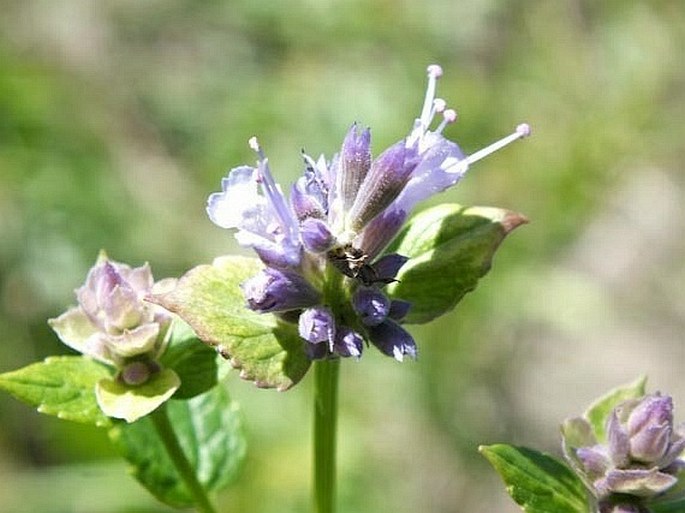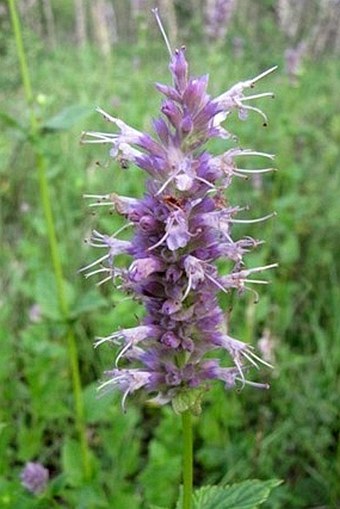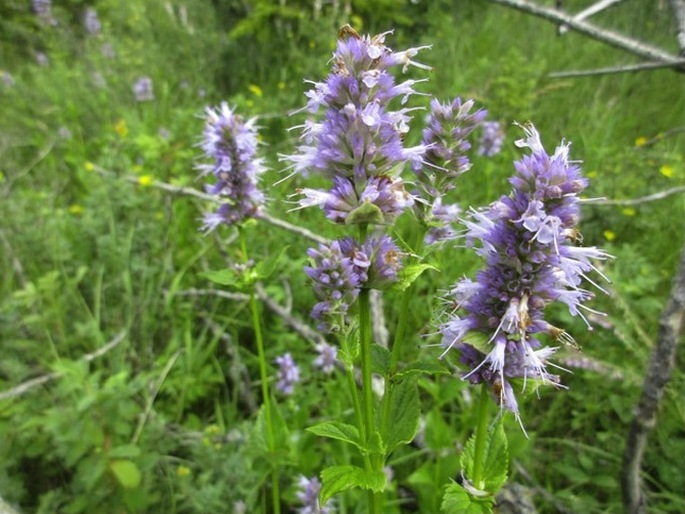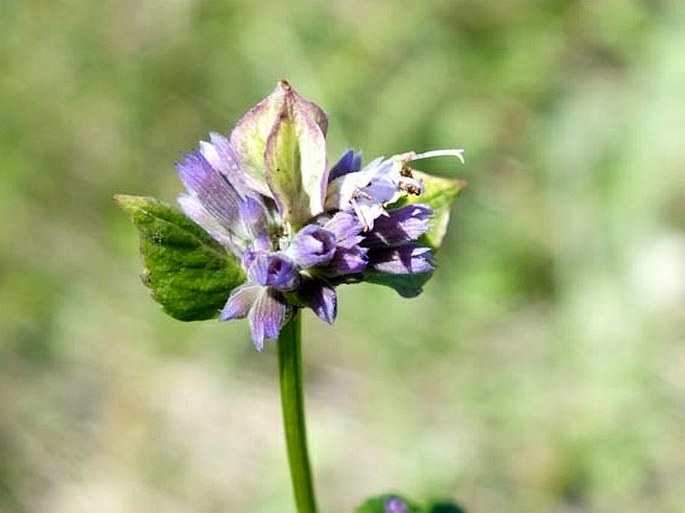Syn.: Agastache anethiodora (Nutt.) Britton, Hyssopus anethiodorus Nutt., Hyssopus foeniculum (Pursh) Spreng., Lophanthus anisatus Benth., Lophanthus foeniculum (Pursh) E. Mey., Stachys foeniculum Pursh, Vleckia foeniculum (Pursh) MacMill.
Family: Lamiaceae Lindl.


Distribution: North American species found in the western part of the continent, in Canada from British Columbia to Manitoba, in the south from state of Montana to Wisconsin, with southernmost distribution in Colorado.
Ecology: It is found in prairie, margins of forests and shrubbery and can be found up to elevation of 2500 m. It blooms from June to August.
Description: Perennial plant, 60–80(–100) cm tall. The stem is straight, simple, sometimes branched, square, hairless, sometimes hairy at the inflorescence. Crushed stems and leaves with anise-like odour. Leaves are opposite, oval to triangular, 2–7 cm long, undersurface whitish, short stalked, margins coarsely toothed. Inflorescence in a terminal spike, 2–10 cm long, 12–18 mm thick, interrupted, crowded, hairy. Flowers are blue or violet, irregular, 2 lipped, 6–12 mm long; sepals 5, prominently 15-nerved; petals 5, stamens 4, long stalked; pistil 1. Fruits are brown nutlets; 4 nutlets per flower.
Use: Native populations and the early settlers used this plant in their traditional medicine to brew tea to treat fevers, colds and coughs.
For its scent it was used also as a spice and source of excellent honey.
Threat and Protection: Listed as endangered in state of Iowa.


These images were taken in Canada, Alberta, Calgary, Weaselhead Natural Environment Park (July 2013).


